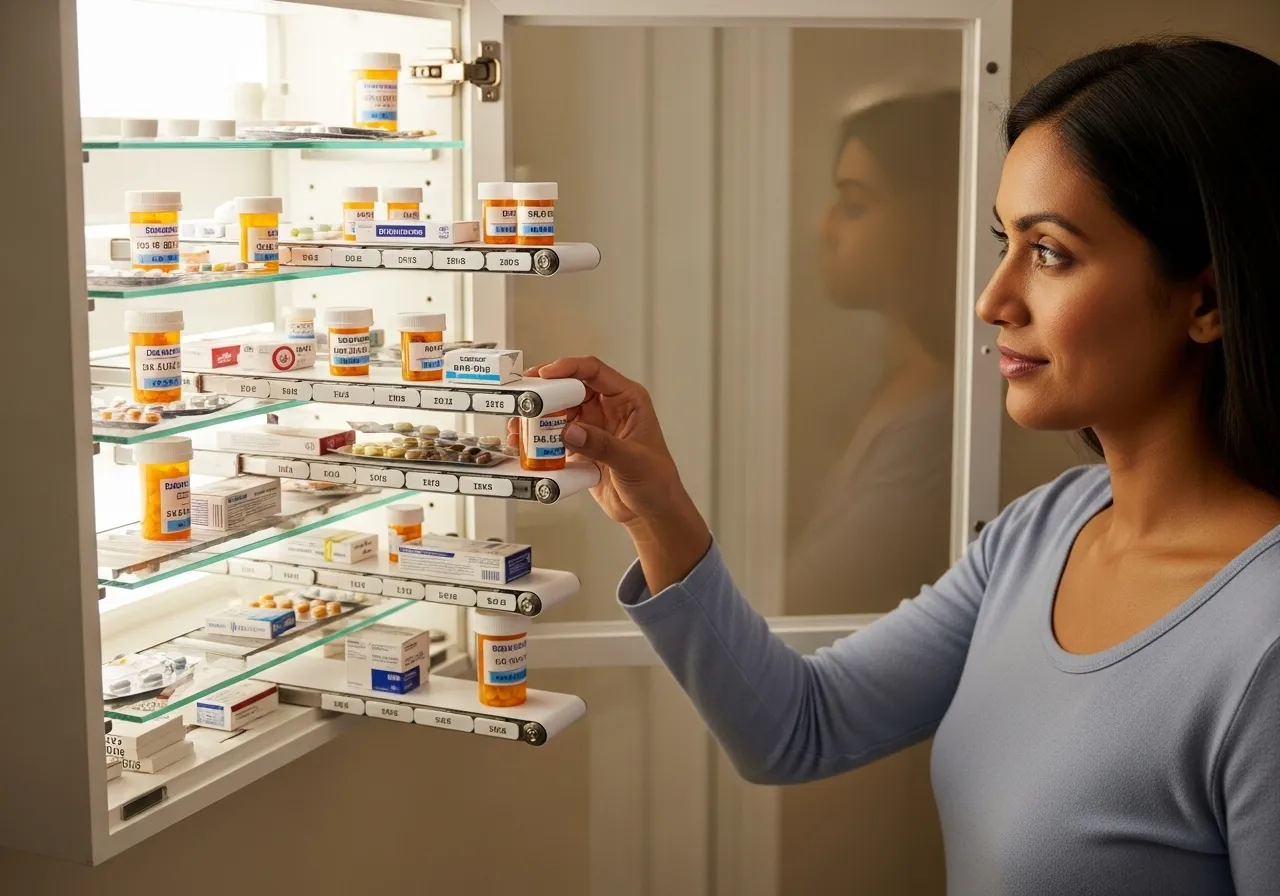
Step 6: The Final Placement and the “First-Expiring, First-Out” Rule
You’ve cleared, cleaned, sorted, zoned, and chosen your containers. Now comes the most rewarding part: putting it all back together into a cohesive, functional system. As you place your labeled containers and individual items back into the cabinet, be mindful of the zones you established. Daily-use items go in the prime real estate at eye level. Less-used items go on higher or lower shelves.
As you load your shelves, introduce one more professional organizing trick: the “First-Expiring, First-Out” (FEFO) rule. This is a simple inventory rotation concept used in grocery stores and pharmacies, and it’s incredibly effective at home. When you buy a new box of your preferred pain reliever, check the expiration date. If it expires later than the box you already have, place the new box *behind* the older one. This ensures you always use up the product with the earlier expiration date first, which reduces waste and guarantees you’re always using products at their peak effectiveness.
Stand back and admire your work. Notice how every item has a clearly defined home. The clear containers and bold labels make it easy to see what you have at a glance. Nothing is hidden, and nothing is crowded. The next time you need something, you’ll know exactly where to look.
Worked Mini-Example: The Linen Closet Medication Zone
Many people find their primary medicine cabinet is too small for everything. Creating a secondary, well-organized medication and first-aid station in a cool, dry linen closet is an excellent solution for overflow and bulk items.
The Space: One shelf in a hall linen closet, measuring 24 inches wide and 12 inches deep.
The Goal: To safely store backup supplies, larger first-aid items, and less-frequently used medications, keeping the primary bathroom cabinet free of clutter.
The Containers: Four stackable, clear plastic shoe-box sized bins, each approximately 13″ L x 8″ W x 5″ H. Their uniform size creates a clean, modular look and they are large enough to hold bulkier items.
The Plan and Labels:
Bin 1 (Left): “FIRST AID – MAJOR”
Contents: This bin holds items for more significant injuries. An instant cold pack, a rolled elastic bandage, large sterile gauze pads, burn gel, and a digital thermometer.
Placement: Easily accessible at the front of the shelf.
Bin 2 (Behind Bin 1): “COLD & FLU”
Contents: Backup supplies for sick days. A new bottle of cough syrup, a box of daytime cold capsules, a box of nighttime capsules, and a spare box of tissues. When a new multi-pack of cough drops is purchased, it goes in here, and the FEFO rule is applied.
Placement: Stacked behind the primary first-aid bin, as it’s accessed more seasonally.
Bin 3 (Right): “PAIN & STOMACH”
Contents: Bulk bottles of pain relievers, backup antacids, and other digestive aids. This is the perfect place to apply the FEFO rule with new purchases from the warehouse club.
Placement: Next to the major first-aid bin for easy access.
Bin 4 (Behind Bin 3): “SKIN & SUN”
Contents: Seasonal items like sunscreen, insect repellent, and aloe vera gel. Also contains larger tubes of specialty creams or ointments not needed on a daily basis.
Placement: Stacked in the back, as these items are used less frequently in colder months.
The Result: This system moves a significant amount of clutter out of the high-humidity bathroom. Everything is protected from dust, clearly categorized, and easy to find. When a supply in the main medicine cabinet runs low, you know exactly where to go for the backup.

















